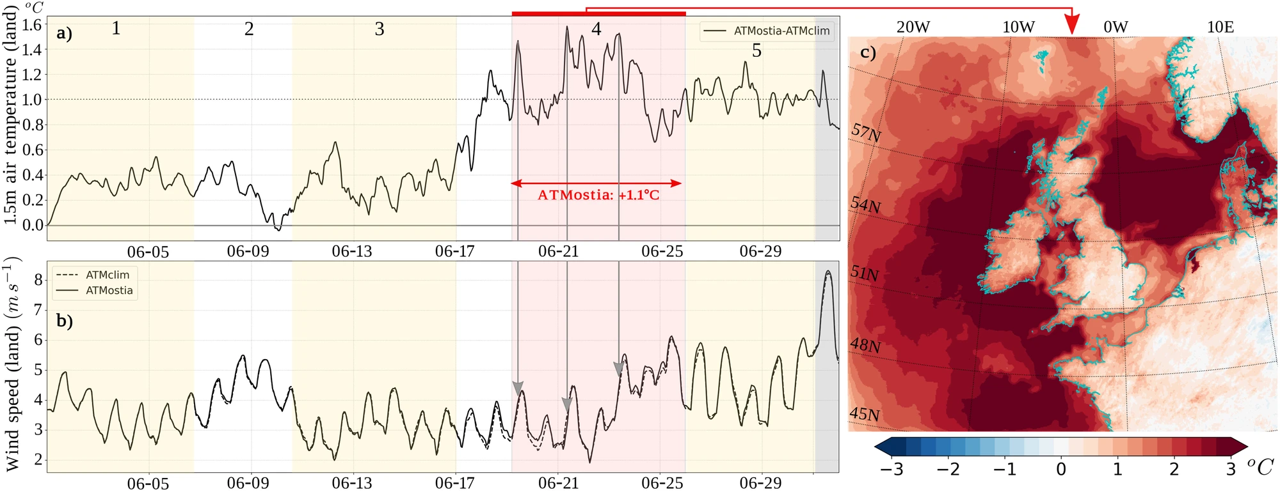Using regional environmental predictions to understand impact of marine heatwaves on UK weather
A new Met Office led paper demonstrates how the summer 2023 marine heatwave was generated by exceptional atmospheric conditions, and contributed to breaking UK land temperature records
Marine heatwaves (MHW) are prolonged (>5 days) periods of anomalously warm sea surface temperature (SST). They can have strong ecological and socioeconomic impacts, such as mass coral bleaching in tropical regions, biological regime shifts in temperate regions and enhanced coastal urban heat islands. A regional MHW affecting the waters around the UK during June 2023 provided the catalyst to exploit the Met Office’s Regional Environmental Prediction capabilities to understand its drivers, and to assess its impact of the evolution of UK weather.
The North Atlantic experienced record breaking temperatures during spring 2023, with global sea surface temperatures for both April and May 2023 being the highest on record for those months in a series stretching back to 1850. A number of factors may have contributed to these conditions developing, for example discussed by Kuhlbrodt and co-authors. Global sea surface temperatures for 2024 are already the highest on record (e.g. NOAA; Mercator).
Regional Environmental Prediction (REP) brings together atmosphere, land, hydrology, ocean, wave and marine biogeochemistry modelling components to directly represent the interactions between these systems in our simulations. This has applications on short-timescales, such as to inform on compound natural hazards, and on longer climate timescales to capture whole system environmental changes.
A recent Met Office led study by Berthou et al, published in the Nature Communications Earth & Environment journal, assessed the characteristics and evolution of the June MHW. Using the REP modelling framework, the team showed how weak winds, strong sunshine and tropical air streams contributed to developing of warmer ocean temperatures around the UK. Once the MHW was established, a combination of weak wind-driven waves and less tidal activity as part of the routine tidal cycle helped to maintain warm temperatures. Simulations also indicated that warmer SSTs reduced cloud cover compared to normal conditions, further enhancing solar radiation to maintain the MHW.
By simulating how the ocean feeds back on the atmosphere using coupled REP simulations, it was possible to show how relatively warmer ocean temperatures influenced the weather over the UK during June 2023 (Figure 1). It was assessed that the MHW contributed around 0.6 °C warming over the UK, compared to more average ocean temperature conditions. The June UK monthly temperature record was broken by 0.9 °C.

Figure: Near-surface air temperature difference averaged over the British Isles between a regional atmospheric simulation with the observed marine heatwave (ATMostia, with OSTIA SSTs) and without (ATMclim, with climatological OSTIA SSTs). b Wind averaged over the British Isles in both simulations (ATMostia in full line and ATMclim in dashed line). c Map of 1.5 m air–temperature differences (ATMostia–ATMclim) averaged from 19 to 25 June (red area on a, b). Reproduced from Berthou et al. (2024).
A group of UK researchers working across atmosphere, land and ocean science disciplines will be meeting in Bristol during July 2024 to explore how the REP framework components can be further developed. They will also discuss how data from novel experiments such as demonstrated for the summer 2023 MHW can bring new understanding on our complex environment and underpin guidance and information for society from days to decades ahead.





